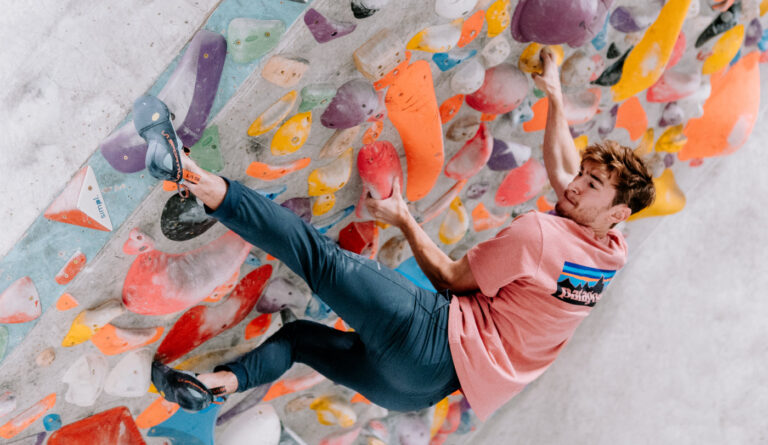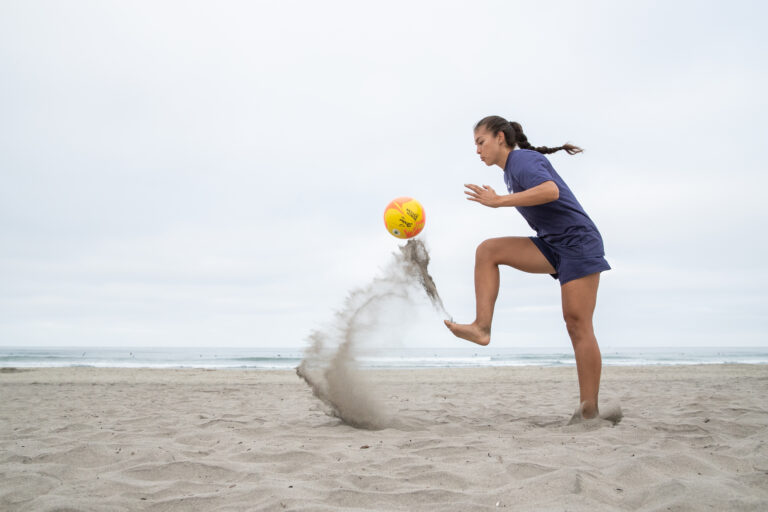For skiing in Utah in March, wear layers, a waterproof jacket, pants, gloves, goggles, and insulated boots. Utah offers stunning skiing opportunities in March with its perfect blend of powdery slopes and sunny days.
As the winter season gradually transitions into spring, it is essential to dress appropriately for the changing weather conditions. Layering is key to adapt to the varying temperatures throughout the day, so make sure to wear moisture-wicking base layers, a mid-layer for warmth, and a waterproof and insulated outer layer.
Don’t forget your gloves, goggles, and a helmet for added protection. Quality insulated boots will keep your feet warm and comfortable. With the right gear, you’ll be ready to enjoy the breathtaking beauty and exhilarating ski trails in Utah’s majestic mountains.
1. Layering For Warmth And Protection
htmlWhen preparing for skiing in Utah in March, it’s crucial to layer your clothing properly to stay warm and protected. The base layer is your first line of defense against the cold. Look for moisture-wicking and quick-drying fabrics like polyester or merino wool. Avoid cotton as it retains moisture and can leave you feeling damp and chilled.
The mid layer provides additional insulation and helps trap body heat. Opt for fleece, wool, or insulated jackets that are breathable and offer an excellent warmth-to-weight ratio. Remember to choose a mid layer that allows for easy movement on the slopes.
Your outer layer should protect you from the elements, including wind and snow. A waterproof and windproof ski jacket and pants are essential. Look for features like sealed seams and a snow skirt to keep you dry and warm throughout the day.
Accessorize appropriately for skiing in March in Utah. Wear moisture-wicking, insulating, and thick socks to keep your feet warm and dry. Invest in a good pair of ski gloves or mittens that are both warm and waterproof. Don’t forget to wear a helmet to protect your head and goggles to shield your eyes from the snow and sun.
2. Choosing The Right Clothing And Gear
Choosing the right clothing and gear for skiing in Utah in March is essential to stay comfortable and protected on the slopes.
Ski Jacket
A good ski jacket is crucial for keeping you warm and dry. Look for one that is waterproof, breathable, and has insulation to trap heat.
Ski Pants
Invest in ski pants that are also waterproof and breathable. Opt for pants with insulation or layering options to adapt to changing temperatures.
Gloves Or Mittens
Protect your hands from the cold with waterproof gloves or mittens. Look for ones with insulation and a secure wrist closure.
Goggles Or Sunglasses
Protect your eyes from the sun, wind, and snow glare with goggles or sunglasses. Goggles offer better protection and visibility in variable weather conditions.
Helmet
Always wear a helmet to protect your head from potential injuries. Look for a helmet that fits well and has adjustable vents for temperature control.
Neck Gaiter Or Balaclava
A neck gaiter or balaclava can provide extra warmth and protection for your face and neck in chilly conditions.
Socks
Invest in moisture-wicking and cushioned ski socks to keep your feet warm and comfortable throughout the day.
Boots
Make sure your ski boots fit well and provide proper support. Consider getting them professionally fitted if needed.
Ski Bindings
Ensure that your ski bindings are properly adjusted and in good condition. This helps prevent injuries and allows for proper ski control.
3. Dressing Appropriately For Changing Weather Conditions
In order to dress appropriately for changing weather conditions while skiing in Utah in March, it is crucial to check the weather forecast regularly. This will help you prepare and plan accordingly for any potential snowstorms. Make sure to have the necessary gear such as waterproof jackets, pants, and boots to stay dry in case of heavy snowfall.
On sunny days, it is important to protect yourself from the sun’s rays, which can be intense at higher altitudes. Wear sunscreen with a high SPF and don’t forget to cover your face and neck with a ski mask or scarf to prevent sunburn.
Since temperatures can vary throughout the day in March, it is advisable to dress in layers. This way, you can easily adjust your clothing to stay comfortable as the temperature changes. Start with moisture-wicking base layers, add insulating mid-layers, and top it off with a waterproof and windproof outer layer.
4. Recommended Clothing Do’s And Don’ts
- Do: Wear moisture-wicking fabrics. These materials will help keep you dry and comfortable throughout your skiing adventure.
- Don’t: Wear cotton-based clothing. Cotton tends to absorb moisture and can leave you feeling cold and wet.
- Do: Layer up for flexibility. By wearing multiple layers, you can easily adjust your clothing to regulate your body temperature as needed.
- Don’t: Overdress and risk overheating. It’s important to find a balance between warmth and preventing excessive sweating.
- Do: Choose waterproof and breathable outerwear. This will ensure that you stay dry and comfortable, even if you fall or encounter wet conditions.
- Don’t: Wear oversized or ill-fitting gear. Properly fitting clothing and equipment will allow for better mobility and performance on the slopes.
5. Essential Accessories For Comfort And Performance
Helmets with built-in audio systems: Perfect for enjoying your favorite tunes while hitting the slopes. These innovative helmets offer both protection and entertainment, allowing you to stay connected on the mountain.
Hand and toe warmers: Keep your extremities warm and cozy with these handy accessories. Whether it’s a chilly morning or a freezing day on the slopes, these warmers will help you stay comfortable and focused on your skiing.
Ski socks with extra padding: Cushion your feet and minimize the risk of blisters with specially designed ski socks. They provide extra support and protection, ensuring a delightful skiing experience without the discomfort.
Ski-specific backpack for carrying essentials: Stay organized on the slopes with a backpack designed specifically for skiing. These backpacks feature convenient compartments and attachments to carry your water bottle, snacks, extra layers, and other essentials.
Ski boot warmers for cold feet: Say goodbye to frigid toes with ski boot warmers. These compact and battery-powered devices will keep your feet toasty, allowing you to fully enjoy your skiing adventure.
6. Proper Gear Maintenance And Care
Drying out gear after each use:
Properly drying out your ski gear after each use is crucial to prevent mold, mildew, and odors. Be sure to remove any wet items such as gloves, socks, and base layers and hang them up to air dry. Boots should be unplugged and allowed to dry completely. You can use a boot dryer or stuff them with newspaper to absorb any moisture. For helmets, wipe the interior and exterior with a damp cloth and allow them to dry naturally.
Cleaning and washing instructions for clothing:
It’s important to follow the manufacturer’s instructions when cleaning your ski clothing. Most garments can be machine washed on a gentle cycle with a mild detergent. Avoid using fabric softeners as they can affect the water repellency of your outerwear. Hang dry your clothing rather than using a dryer. To maintain the waterproofing of your gear, you may need to apply a DWR (Durable Water Repellent) treatment after washing.
Waxing and tuning skis or snowboards:
To keep your skis or snowboard in top shape, regular waxing and tuning is essential. Apply a fresh coat of wax at the beginning of each season or as needed. A waxed base provides better glide and protection against abrasions. Additionally, tune the edges of your skis or snowboard to ensure sharpness and optimal performance. You can use a file or stone to remove any burrs and maintain the correct bevel angle.
Storing equipment during the off-season:
Proper storage during the off-season is essential to extend the lifespan of your equipment. Make sure your skis or snowboard are clean and dry before storing them. Store them in a cool, dry place away from direct sunlight to prevent warping or damage. It’s recommended to keep them in a padded storage bag or rack to protect them from dust and impacts. Bindings should be set to their lowest tension settings, and any adjustable parts should be loosened to avoid tension stress over time.
7. Safety Tips And Guidelines
When skiing in Utah during March, it is essential to prioritize safety on the slopes. Here are some key tips to ensure a safe and enjoyable skiing experience:
1. Wearing a helmet for head protection: It is crucial to wear a helmet while skiing to protect your head from any potential impact or accidents.
2. Using sunscreen to protect against sunburn: Despite the cold temperatures, the sun’s rays can still be intense at high altitudes. Apply sunscreen to exposed skin to prevent sunburn.
3. Knowing and following the ski resort’s rules and regulations: Each ski resort may have specific rules in place to maintain safety. Familiarize yourself with these rules and ensure compliance.
4. Keeping a safe distance from other skiers and snowboarders: Be aware of your surroundings and maintain a safe distance from other skiers to avoid collisions or accidents.
By following these safety tips, you can fully enjoy your skiing adventure in Utah during March while minimizing any potential risks.
8. Renting Vs. Buying Skiing Gear
In March, Utah’s ski slopes are filled with adventure seekers ready to hit the powder. One important decision when planning your skiing trip is whether to rent or buy your skiing gear. Renting gear has several benefits, including saving money, especially if you’re not a frequent skier. Renting allows you to try different equipment to find what works best for you. Factors to consider when renting include the condition and quality of the gear, the availability of sizes, and the return policy. A cost comparison shows that while buying skiing gear may be more expensive upfront, it can be cost-effective in the long run if you ski frequently. However, renting is ideal for occasional skiers or those who prefer convenience. Here are a few tips to ensure you rent high-quality gear: first, do your research and choose a reputable rental shop; second, book your gear in advance to guarantee availability; third, communicate your skiing level and preferences to the rental staff for personalized recommendations.
9. Packing Checklist For A Ski Trip In Utah
html
Clothing essentials:
– Base layers (thermal tops and bottoms) to keep you warm
– Waterproof and insulated ski jacket and pants to protect you from the cold and snow
– Ski socks that are thick and provide cushioning
– Thermal gloves or mittens, and hand warmers for extra warmth
– Ski hat, neck gaiter, and face mask to protect your head and face
– Goggles or sunglasses to shield your eyes from bright sunlight and snow glare
Gear and equipment checklist:
– Skis or snowboard with bindings
– Ski boots or snowboard boots
– Helmet for safety
– Ski poles for balance and maneuvering
Safety and first aid items:
– Sunscreen with high SPF
– Lip balm with SPF
– First aid kit with essentials like band-aids, pain relievers, and blister pads
– Avalanche safety kit with beacon, shovel, and probe
Personal and miscellaneous items:
– Water bottle or hydration pack
– Snacks for energy
– Wallet with ID, cash, and credit cards
– Cell phone for communication
– Camera to capture memorable moments
– Portable phone charger for convenience
:max_bytes(150000):strip_icc()/tl-trusted-tested-ski-snowboard-pants-test-helly-hansen-switch-cargo-julia-sayers-12746ab53c8447f7959c508674c231d8.jpg)
Credit: www.travelandleisure.com
Frequently Asked Questions On What To Wear Skiing In Utah In March
Is Skiing Good In March In Utah?
Skiing in Utah during March is excellent due to abundant snowfall and ideal weather conditions. The mountains offer diverse terrain and top-notch ski resorts, ensuring a thrilling experience for all skill levels.
Is March Too Late To Ski In Utah?
March is a great time to ski in Utah. The state’s ski resorts still have good snow conditions, and you can enjoy a variety of slopes and activities. So, don’t worry, you can hit the slopes and have a fantastic skiing experience in March.
Can I Ski In Salt Lake City In March?
Yes, you can ski in Salt Lake City in March. The city has several ski resorts offering great downhill skiing opportunities this time of year.
What Should I Pack For A Ski Trip In Utah?
For a ski trip in Utah, pack warm clothing layers, including thermal base layers, waterproof outerwear, and insulated gloves and socks. Don’t forget goggles, a helmet, and sunscreen for sun protection. Also, bring a valid ID for lift tickets and any necessary ski equipment and gear.
Conclusion
When planning your skiing trip to Utah in March, it is essential to ensure that you are dressed appropriately for the conditions. Layering your clothing, wearing moisture-wicking materials, and protecting your extremities are all crucial factors to consider. By following these tips, you can enjoy your skiing adventure comfortably and make unforgettable memories on the slopes of Utah.
Happy skiing!





